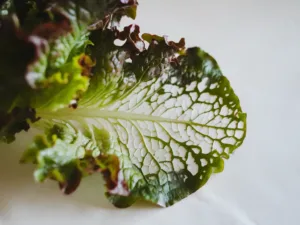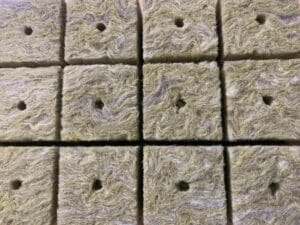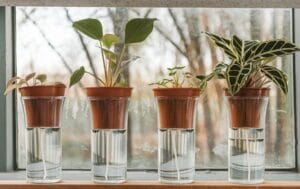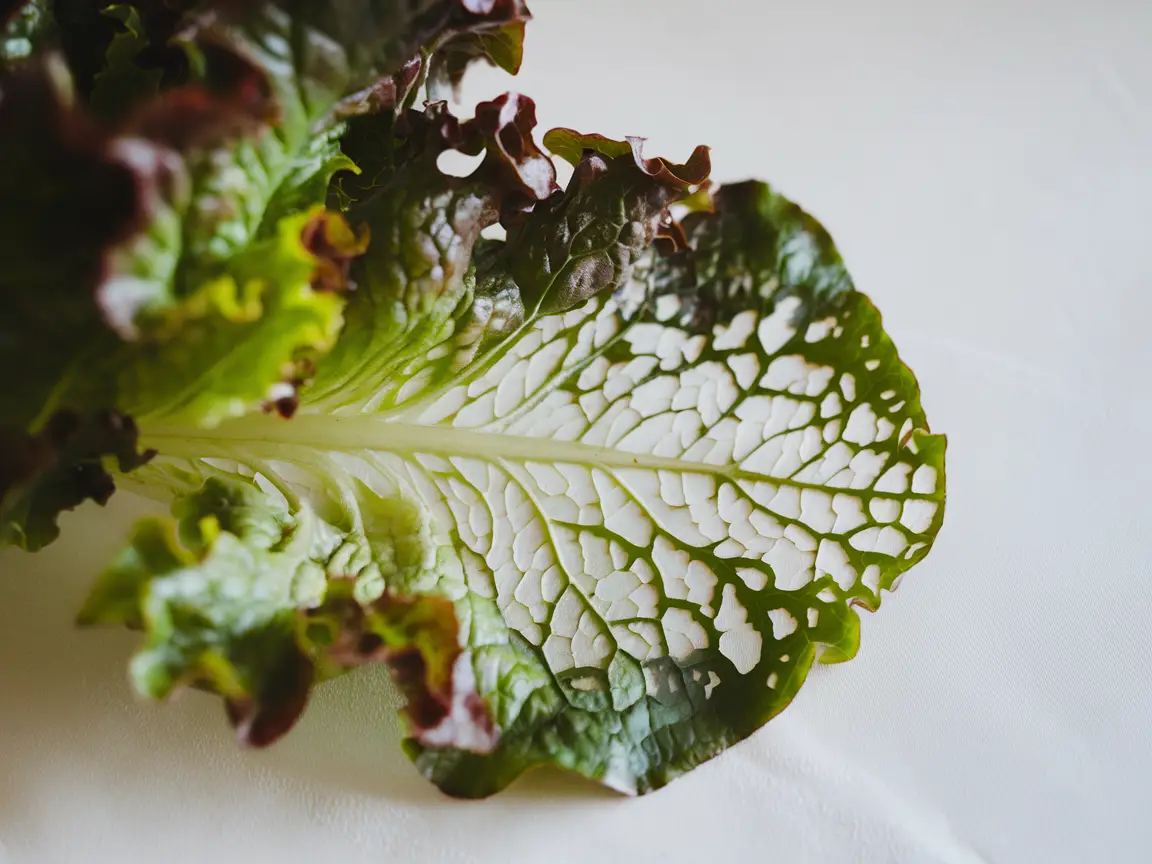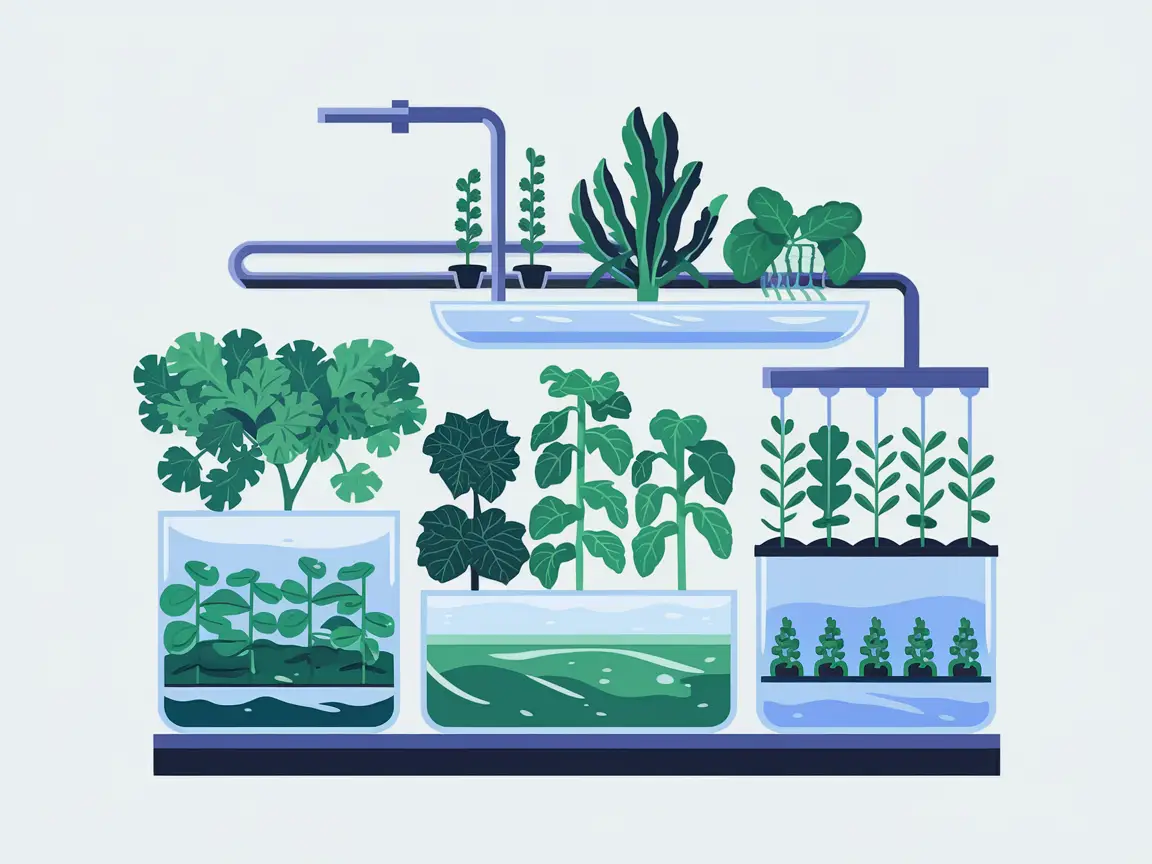What is Vermiculite?
Vermiculite is a naturally occurring mineral rock from a group of hydrous phyllosilicate minerals. It expands when exposed to high temperatures, resulting in a lightweight, flaky structure that resembles small flakes. This expanded structure allows vermiculite to hold large amounts of water and nutrients and gradually release them to plant roots.
Why Use Vermiculite in Hydroponics?
Vermiculite offers several advantages in hydroponics that make it a valuable substrate. Here are some of its key properties:
- Excellent Water Retention: Vermiculite can hold several times its weight in water, making it ideal for systems that rely on consistent moisture. It ensures that plant roots always have access to adequate moisture.
- Good Nutrient Retention: Vermiculite has a high cation-exchange capacity (CEC), meaning it can retain nutrients like potassium, magnesium, and calcium and gradually release them to plants. This provides a continuous and balanced nutrient supply.
- Neutral pH: Vermiculite is pH-neutral to slightly alkaline, meaning it doesn’t significantly alter the pH of the nutrient solution, making it easier to maintain an ideal pH range for most plants.
- Good Aeration: While offering high water retention, vermiculite also provides adequate root aeration, essential for promoting healthy root growth and minimizing the risk of root rot.
Challenges of Using Vermiculite
Though vermiculite has many advantages, there are a few challenges and considerations to keep in mind:
- Overwatering Risk: Due to its high water retention capacity, vermiculite can pose an overwatering risk in systems that are constantly supplied with water. This can be problematic in systems like deep-water culture, where water is constantly flowing or pooling.
- Can Break Down Over Time: Vermiculite can decompose over time and become dusty, which may affect the structure of the substrate. This may require more frequent substrate replacement.
- Requires Mixing with Other Substrates: Vermiculite is rarely used alone, as it may not provide the best drainage on its own. It is often mixed with other substrates like perlite or coco coir to improve aeration and drainage.
Types of Vermiculite and Their Applications
Vermiculite is available in various grades and sizes, which are suited to different applications:
- Fine Vermiculite: This smaller grade is ideal for seed sowing and seedling cultivation due to its excellent moisture retention.
- Medium Vermiculite: This size is often used for general gardening and hydroponic applications, providing a good balance of water retention and aeration.
- Coarse Vermiculite: Coarse vermiculite offers better drainage and is ideal for larger plants or systems where higher air circulation is needed.
Using Vermiculite in Hydroponic Systems
Vermiculite can be used in various hydroponic systems. Here are some common applications:
- Substrate Mixes: Vermiculite is often used in combination with other substrates like perlite or coco coir to balance water retention and drainage. This mix provides a good balance of moisture and aeration, making it suitable for many hydroponic systems.
- Drip Systems: In drip systems, vermiculite can be used as a primary or secondary substrate to evenly distribute moisture while providing necessary root aeration.
- Ebb and Flow Systems: In ebb and flow systems, vermiculite works well as it quickly absorbs and retains water but also dries out when water levels recede, preventing overwatering and ensuring even nutrient distribution.
- Pot and Container Cultures: Vermiculite is excellent for use in pots or containers to improve soil structure and optimize moisture and nutrient retention.
Preparation and Maintenance of Vermiculite
To ensure vermiculite functions optimally in your hydroponic system, follow these essential steps:
- Rinse Before Use: Rinse vermiculite thoroughly with water to remove any fine particles or dust. This improves air quality and reduces the risk of dust formation during handling.
- Mix with Other Substrates: Vermiculite is often combined with other substrates like perlite for improved drainage and aeration. A common mix is 50:50, but you can adjust it based on the specific needs of your plants.
- Regular Replacement: Since vermiculite can break down over time, it should be checked regularly and replaced if needed to maintain optimal structure and functionality.
Health and Safety Considerations for Vermiculite
Vermiculite is generally safe to use, but, as with any mineral substrate, take precautions to avoid dust:
- Dust Protection: Wear a dust mask and safety glasses when handling vermiculite to prevent eye and respiratory irritation.
- Storage: Store vermiculite in a dry place to prevent moisture, which can affect quality.
Is Vermiculite Sustainable?
Vermiculite is sourced from natural minerals and expands when heated, making it a relatively eco-friendly substrate. It is inert and can be recycled or used as a soil conditioner in gardens. However, mining and production are energy-intensive, and it is not biodegradable. Mindful use and recycling can improve its sustainability.
Is Vermiculite the Right Substrate for Your Hydroponic System?
Vermiculite is a versatile substrate that offers many benefits for both novice and experienced hydroponic gardeners. It provides excellent water and nutrient retention, is pH-neutral, and ensures good root aeration. If you’re willing to use it in combination with other substrates and leverage its unique properties, vermiculite could be an excellent choice for your hydroponic system.
Try using vermiculite in your next growing project and see how it helps your plants thrive!


